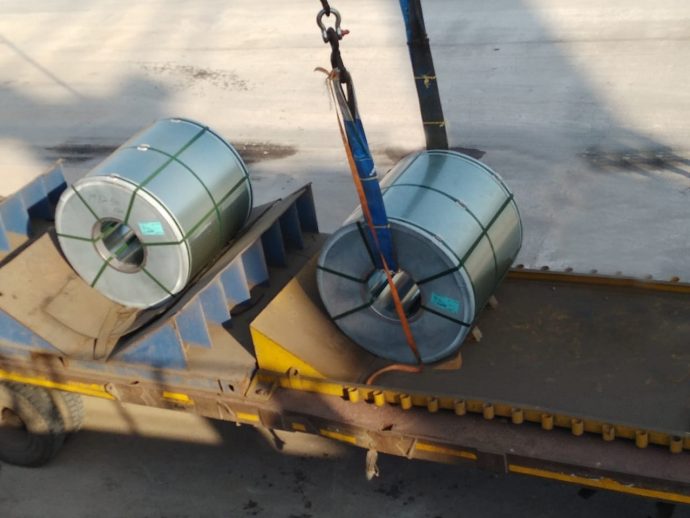India is the world’s second-largest steel producing country, after China, and it has big ambitions for the future. Its National Steel Policy has set targets to treble production capacity by 2030 to feed a multi-fold increase in national consumption and global demand for steel.
And where there’s steel to be exported, there are ships. Dry bulk carriers shipping millions of tonnes of steel to countries around the world. In 2021, GAC India handled about 50 vessels loading or discharging steel at the country’s ports.

Keeping up with change
It's a changing industry, being shaped by ever-changing rules, regulations and market demands, but local experience and expertise handling dry bulk cargo vessels give us the flexibility to adapt.
GAC India helps its customers adapt with market research tools giving commodity-based line-ups, reports, delay analyses, tonnage updates and industry trends to help them stay abreast of the latest port developments, plan intelligently and keep ahead of the curve.
Turnaround
One of the biggest challenges facing steel exporters is the constant demand to reduce the turnaround time of vessels calling at ports in India to mitigate possible congestion.
The country’s major ports run by government entities fix and revise their tariffs based on the berthing policy issued by the Ministry of Shipping, which includes performance-norms based incentives and penalties.

Environmental factors
Another big consideration that will shape the country’s status as a top steel exporter into the future is the environment.
India’s prominence as a steel producer comes with significant energy, environmental, resource and economic consequences. It is currently the third-largest producer of CO2, so it is significant that at the COP26 Summit in Glasgow, India committed to reduce carbon emissions by one billion tons by 2030, raise the share of renewables in the energy mix to 50%, and reduce net emissions to net-zero by 2070. And as the production process for every ton of steel emits about 1.85 tons of CO2, the steel sector has an important role to play.
National regulations are framed in conjunction with the IMO 2020 regulations that aim to reduce and control emissions of vessels arriving in Indian waters. At GAC, we make it a priority to ensure vessels under our agency are aware of those requirements.
Exploring alternatives
The first steps have already been taken towards the ambitious goal of completely decarbonising the steel industry. To start with, the Indian Steel Manufacturing Association says steel companies aim to reduce emissions down from the current 2.6 tons of CO2 per ton of crude steel output to 2.4 tons by 2030.
In 2021, one of the India’s pioneers in steel production – Tata Steel - developed the first blast furnace carbon capture plant which is capable of capturing 5 tons per day for reuse at its site. Other steel giants like the Steel Authority of India (SAIL) and Rashtriya Ispat Nigam Ltd (RINL) are also striving to reduce CO2 emissions by installing state of the art technologies at various stages of their production.
It takes a great deal of fossil fuel to generate the high temperatures needed in traditional steel production, but alternatives are now being explored. That includes solar power to drive steel mills, which is not only ecologically friendly, it also makes sound economic sense as the lowest cost power in Indian conditions.
One of the country’s major producers, Syngas - JSPL (JINDAL), has abandoned coal-fired energy and is using ‘Syngas’ at their steel plant in Ankul, Odisha, to generate high-quality gas for the production of direct reduced iron or sponge iron.
Looking ahead, hydrogen-based steel production is likely to reduce our dependence of importing coking/non-coking coal and move the country to self-reliance, prompting companies like Reliance and Adani to take their initial steps into the green hydrogen sector.
The challenges and changes India faces as a top steel exporter are several, but action is already being taken to tackle them. And as long as dry bulk vessels call at the country’s ports, GAC will be providing the intelligence, expertise and experience to help streamline those actions.